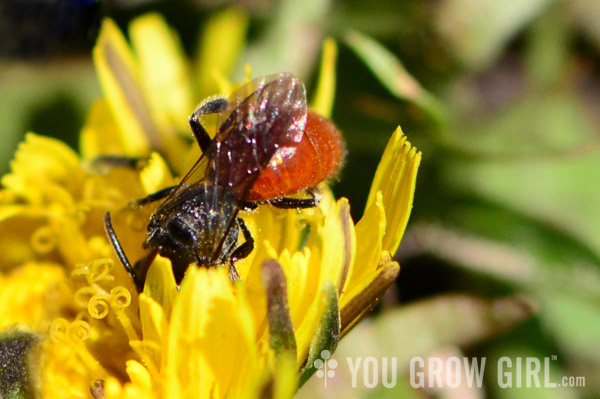
The attendance of pollinators and other insect allies in my garden has blossomed in the five years since I first put spade to the earth and dug up the turf grass that dominated this yard. Over the years, I’ve had many gardens in a range of urban settings, but none have been as alive as this one has come to be. As the plants in this garden have matured and as I have let go of the leash of over-tending and a compulsion to order, I have noticed that their populations have expanded beyond anything I thought possible in such a tight urban space. On a sunny summer day they bring a joyful energy and presence to the garden that makes my other gardens feel almost dead by comparison.
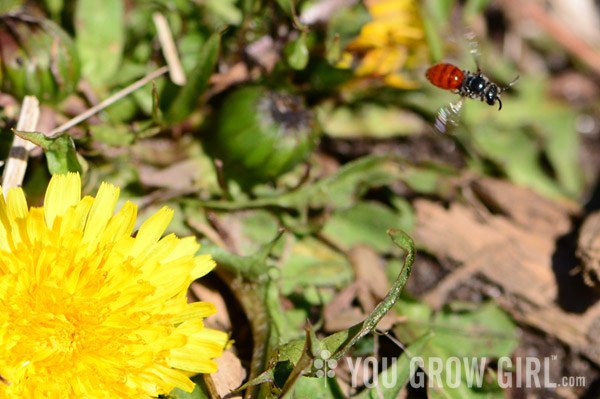
This new, ever-expanding experience with these tiny alien beings that inhabit my garden has built up a heightened curiosity about them. It’s not that I was never curious in the past. I bought books and reference materials; I paid attention. But this interest is bigger than it was before. Now I want to know what they do, what their cycles are, where they come from, and what I can do to offer them even more. It is as if I have shifted my focus away from the plants and it is the insects who have become my new overlords.
For that reason I have set a goal for this growing season to try and photograph and identify as many of the insects that inhabit my little urban Eden as possible. My focus will likely be on bees, since the diverse range that visit my garden has been such a happy discovery for me. However, since I don’t know what this season will hold, I’m leaving it open to chance and whatever I happen to capture with my camera lens.
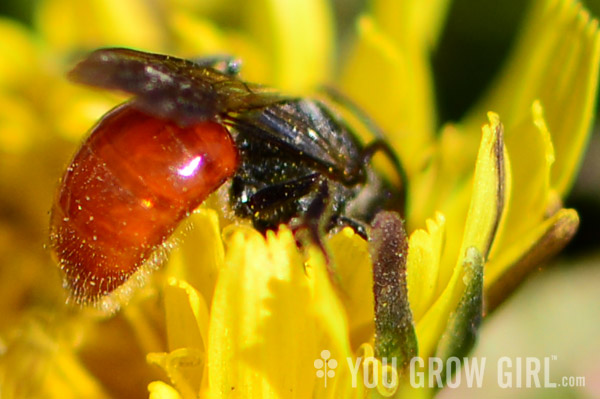
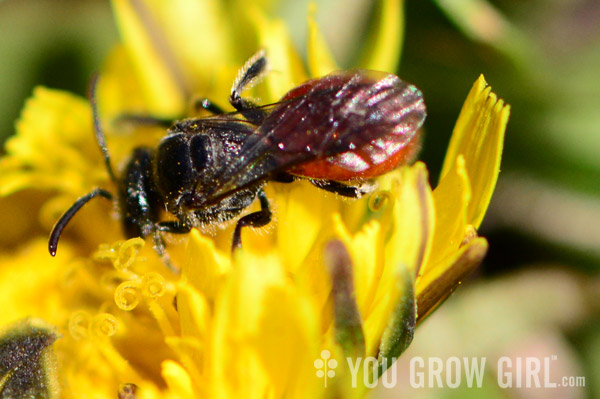
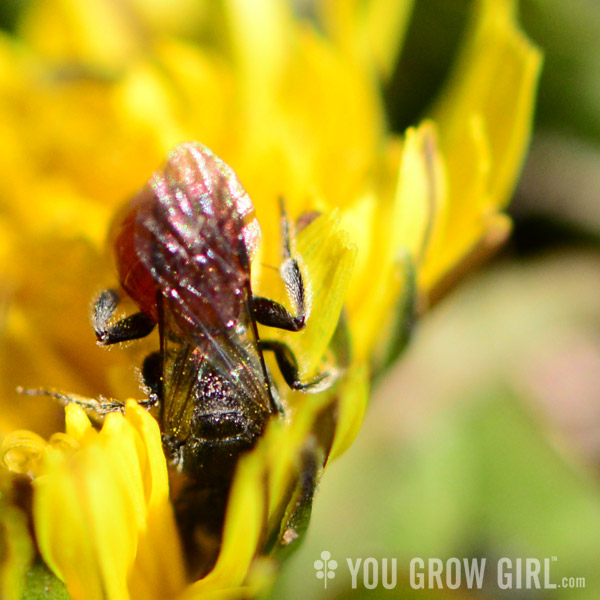
Specodes Bee
It was Davin who drew my attention to this teeny, tiny bee as it drank from the first dandelion flower to blossom in the garden. A wide range of tiny bees inhabit my garden, some with the look of tiny honey bees and others with black and white striped abdomens and others with jewel-like metallic green upper bodies. But I have never noticed one like this with a bright rusty red abdomen. I quickly grabbed my camera, and when I was finished taking pictures I ran inside to consult the free guidebook that was recently made available through the Toronto Public Library entitled, Bees of Toronto: A Guide to Their Remarkable World (these books are a part of a City of Toronto Biodiversity Series). This booklet is fantastic and its image charts will surely be an important part of my bee identification arsenal this summer. I was quickly able to locate this bee as one in the sphecodes genus. I don’t know specifically which species and haven’t tried to guess. Sphecodes bees drink nectar, but do not collect pollen — the lack the hairs to do so effectively. Instead, they are cleptoparasitic, meaning that they steal the stores of other bees by laying eggs in their nests. They are often referred to as cuckoo bees.
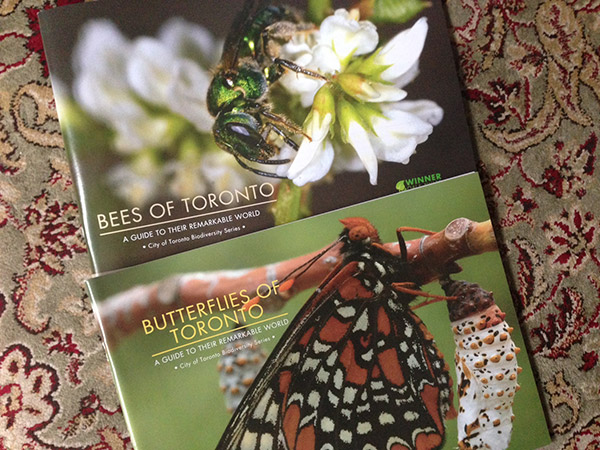
Giveaway
UPDATE: Anne was randomly chosen as the winner of this giveaway.
I have an extra copy of two books from the City of Toronto Biodiversity Series to giveaway: Butterflies of Toronto and Bees of Toronto. While these books are regionally specific I figured some of you with similar fauna may appreciate them. They’re beautifully made books.
To Enter: In the comments, tell us which insect ally you would like to learn more about. As always, you can type in “count me in,” and that will count as an entry.
This giveaway is open to residents of Canada and the Continental US only. Winners will be drawn randomly after entries close at midnight on Friday, March 13, 2015, and informed by email.
bees
I’d love to learn more about the various beetles (some of whom are quite lovely) that visit.
I always want to learn more about bees and other pollinators. I also live in Toronto and I understand that we have hundreds of native species here. And also we were designated a bee city earlier this year I think.
I’d love to learn more about butterflies in our area, but wonder if the give away is still on as the date has long expired. If it is still on, count me in,
Syrphid flies (Hover Flies). Not only are the adult forms diverse pollinators, but their larvae are voracious predators of aphids. I’d like to know what different Genera are in my area, and I expect they’d be similar to Toronto with our increasingly temperate conditions in central Alberta.
I’m not from Toronto, so don’t need to be included in the giveaway – however I love bees (and many insects) and I wanted to reccomend the website bugguide.net. You can post pictures and entomologists help people ID them. Lovely photos as well!
The Ladybug
I would love to have that bee book!!!
I’m fascinated by the tiny native bees too…and also coming to appreciate the wildlife in my yard at least as much now as the food production. Would love to learn more about bees in particular…
I would love to learn more about local pollinators, especially bees.
Parasitic wasps.
After freaking out that a local lady was trying to destroy the bees coming out of her lawn, I learned from A local beekeeper that I’ve recently befriended , that bees that have hives/Nests(?) underground do not sting.! Even after telling her that, (since that was that was her excuse for wanting to be rid of them) she continued to regularly fill the hole in her lawn full of poison. Oh man, dont get me started….just wanted to share that w people who flip out and lose their minds when a bee flies by or try to kill them with a flyswatter simply because they are close. I’m sure there are many types that do not sting…oh! And there is also a new dvd available at our library just out last week- that I will post the name of -on Bees- (it’s probably available in the GTA too, since we’re just an hour and a half from the city)